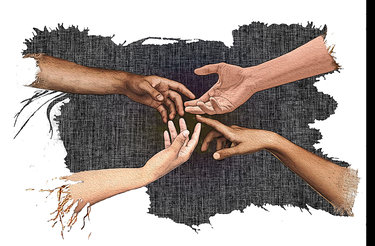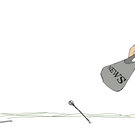Loneliness is a malady as ancient as Adam and as current as COVID
Frank Pezze doesn’t remember ever being lonely.
He grew up in a close-knit family, the oldest of six siblings and, after he married, he had four kids of his own.
A through-line in his life has been sports.
At Guilderland High School, he played football, wrestled, and ran track. At Syracuse University, he was on the soccer team.
But team sports didn’t end for him, as they do for many, with graduation.
For his entire adult life, Pezze has organized adult leagues and tournaments.
At age 70 now, Pezze and men with whom he has played basketball for half a century just donned T-shirts recognizing their 50th anniversary. You can see their picture and read their story in this edition of The Enterprise.
We see Pezze as a beacon of hope, a light to guide us in a time of dark loneliness.
We’ve spent 144 weeks writing about the effects of the pandemic here in Albany County, tracking not just the numbers from week to week but also looking at the scientific research on various aspects of COVID-19 and the upheaval it caused.
People around the world experienced an increase in loneliness during the pandemic, which, although small, could have implications for people’s long-term mental and physical health, longevity and well-being, according to research published by the American Psychological Association this past spring.
The researchers make clear the difference between loneliness and isolation: Social isolation means having a small social network and few interactions with others, while loneliness is the painful feeling of having less or poorer quality social connections than a person wants.
To see if the pandemic restrictions increased loneliness, the researchers reviewed 34 studies from four continents — primarily in North America and Europe, mostly high- and upper-middle-income countries — involving more than 200,000 participants. All of the data came from long-term studies that measured participants’ levels of loneliness before the onset of the pandemic and again during the pandemic.
The researchers found a small but significant increase in loneliness during the pandemic — about a 5-percent increase in the prevalence of loneliness across the individual studies, on average.
The researchers also note that, even before the COVID-19 pandemic, social isolation and loneliness were becoming major public health and policy concerns.
In the spring of 2021, as most of America was coming out of the lockdown meant to quell the spread of COVID-19, an American Perspectives Survey found that, because of the pandemic — either due to self-imposed isolation or mandated shutdowns — about half of Americans lost touch with at least a few friends over the course of the year and nearly one in 10 Americans report having lost touch with most of their friends.
Many Americans do not have a large number of close friends, the survey found, with close to half reporting three or fewer. More than one-third of Americans report having between four and nine close friends. Thirteen percent of Americans say they have 10 or more close friends, while 12 percent said they had no close friends.
An American National Social Network Survey conducted in 2020 found that 17 percent of Americans had no close social ties, defined as someone the respondent had talked to in the past six months about an important personal matter.
Why does that matter?
Because people who have more friends report being more satisfied — going from 29 percent with no close friends being completely or very satisfied to 75 percent of those with 10 or more close friends expressing this level of satisfaction.
And, even without the pandemic, we’re headed in the wrong direction.
The number of close friendships Americans have appears to have declined considerably over the past several decades. In 1990, only 3 percent said they did not have any close friends.
An analysis from the American Enterprise Institute on the survey interprets the results as particularly bleak for men.
The percentage of men with at least six close friends fell by half since 1990, it notes, from 55 percent to 27 percent. The study also found the percentage of men without any close friends jumped fivefold.
Single men fare the worst. One in five American men who are unmarried and not in a romantic relationship report not having any close friends.
“Even men with a couple of close friends are not in great shape,” the analysis says. “When it comes to our social circles, size matters. Americans with one close friend are not any less lonely or isolated than those without any close friends.
“And those with a couple of close confidants are only modestly better off. For those with three or fewer close friends, loneliness and isolation are fairly common experiences: More than half say they have felt that way at least once in the past seven days.
“The bad news doesn’t end there. Not only do men have smaller friendship circles, they report being less emotionally connected to the friends they do have. Both men and women benefit from developing strong emotional bonds with their friends, but women are more successful in establishing these types of relationships.”
Nearly half of women but less than a third of men say they have had a private conversation with a friend during which they shared their personal feelings in the past week. Forty-one percent of women report having received emotional support from a friend within the past week, compared to 21 percent of men.
The threads that traditionally bound us together are fraying. We hear it every day at our community newspaper as people we cover lament the declining sense of community.
We hear about churches that fewer people attend — although we’ve recorded the joy of those who are part of a church family. We hear about community organizations that go begging for members — although we write about the good works those organizations perform.
And, although we understand the ease of working from home, we also acknowledge the sense of isolation that can ensue since the American Perspectives Survey found that Americans are now more likely to make friends at work than any other way — including at school, in their neighborhood, at their place of worship, or even through existing friends.
If, as the American Psychological Association research asserts, this increased loneliness has implications for people’s long-term mental and physical health, longevity and well-being, we need to do something, as a community, about it.
So, we’ll end where we started — with Frank Pezze as our guide. He set up tournaments over the years to give the basketball players a focus; he switched up team members so the competition remained fun. After the games, the players go out together, drink beer, and eat pizza.
In short, they are friends.
Pezze credits the Westmere Elementary School principal Jim Cleary who first let him use the school gym for the then-recent Guilderland graduates, and further credits the Guilderland school district “all these years” allowing the players to rent out a gym.
It takes a community to engender a sense of belonging, providing a place where people can gather.
Not all of us at age 70 are going to be playing basketball like Frank Pezze and his pals. We get that.
But each of us can, if we want to, be part of something larger than ourselves.
If we can step away from our work and our screens long enough to take our kids to a Scout meeting, or join a garden club project, or hear a historical society lecture, listen to a library concert, or volunteer at the food pantry or Caring Closet, we will meet real-life, flesh-and-blood human beings.
And we may just find a friend.



Go Frank Pezze!!!